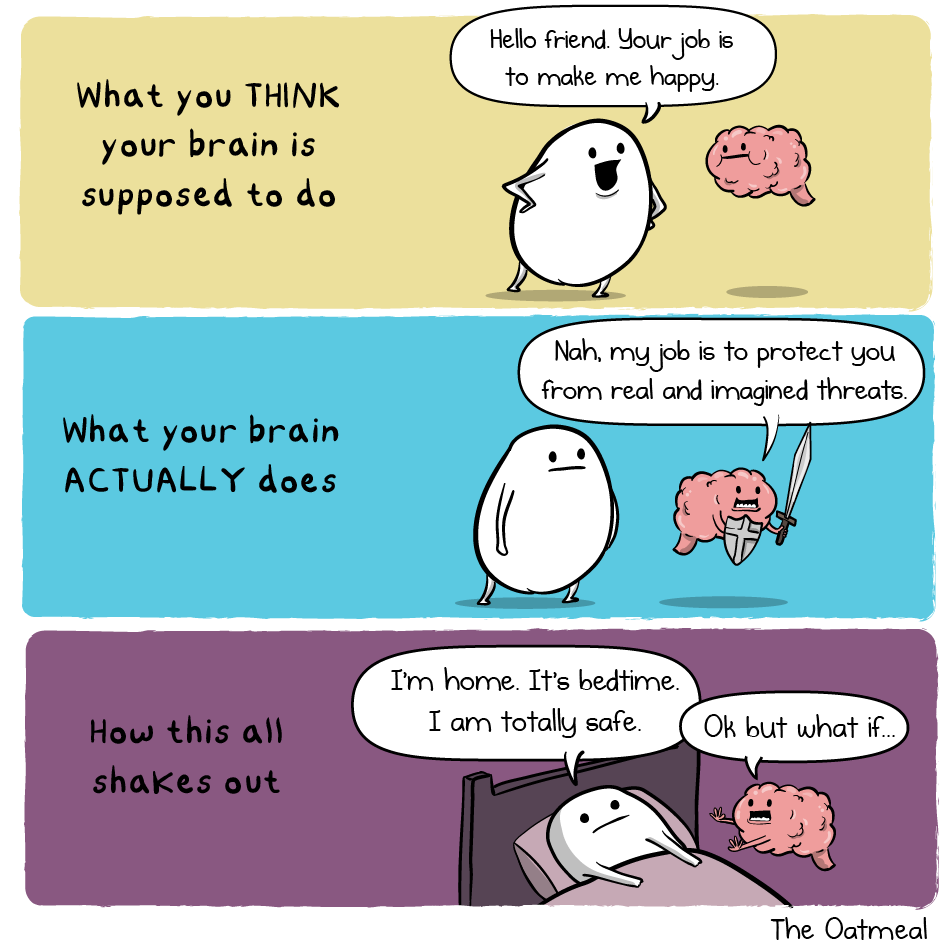Cultural questions cannot be settled by war metaphors unless what you want is perpetual war
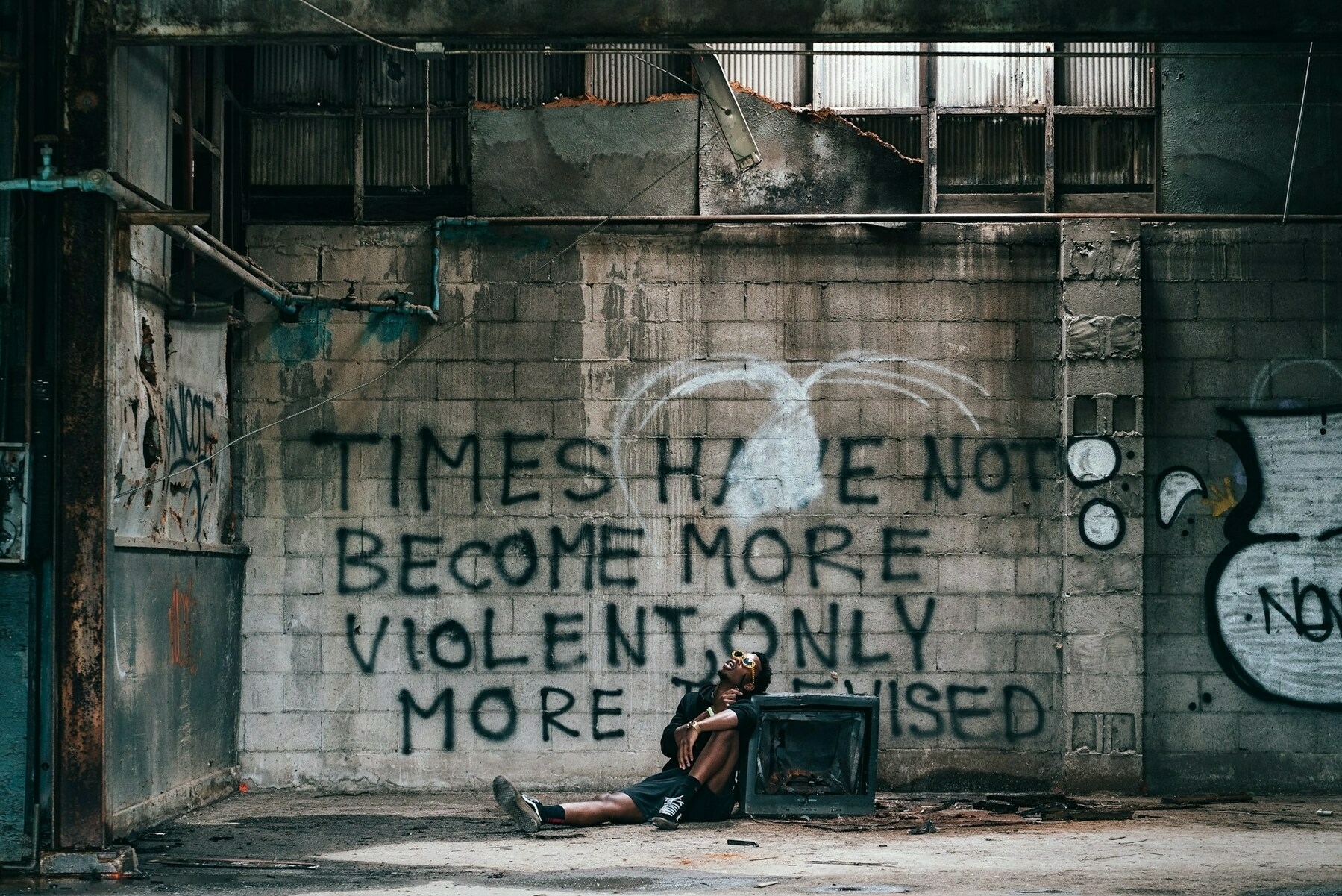
This essay by Carlo Iacono contains some beautiful, very quotable writing. It’s a good example of what can be produced when an author works with an LLM as an assistant, rather than just offloading the entire process to AI.
A society that thinks of itself as unfinished does not panic when new people arrive. It prepares. It builds welcome centres that feel like actual welcomes, it funds language classes that recognise adult dignity and childhood speed, it supports community organisations that know the local texture better than any central plan. Security and order are not the enemies of hospitality, they are its scaffolding. The point is not to pretend borders do not exist. The point is to design borders that are both humane and workable, so that fear does not have to run the place.
[…]
The most radical thing an executive could do is learn the power of restraint. Strength is not always what you lift, sometimes it is what you put down. A president or a prime minister who distributes authority across competent institutions and insists on processes that can be seen, understood, and challenged is not surrendering leadership. They are proving that leadership serves something larger than the self. Independent justice is not naive. It is the ground on which trust can grow. When charging decisions are insulated from partisan whims, when immigration courts are funded so that due process is not an aspiration but a timetable, we are not being soft. We are being serious. We measure seriousness by how we treat those who have least power.
[…]
We can reimagine how power is shared across place. Federalism, devolution, subsidiarity, these are all local dialects of the same idea, that different levels of government are good at different tasks and should learn from one another. Call it a laboratory spirit. A small country that pilots a high quality early years programme can teach a larger neighbour the method. A city that cracks the problem of bus reliability can hand over the playbook. The point is not a race to the bottom for weak rules and lower taxes, the point is a race to the top for the conditions that let people flourish. You do not have to agree about everything to trade recipes.
Cultural questions cannot be settled by war metaphors unless what you want is perpetual war. The fear that animates exclusionary politics is real, the sense that a way of life is sliding away while someone on television laughs.
[…]
Government does not create society from scratch. It can make the weather better or worse. It can fund the community centre that becomes the hub where a retired electrician teaches teens to repair broken toasters and also broken confidence. It can support local journalism so that rumours are not the only news that travels. It can build parks that are safe and ordinary so that grandparents have somewhere to sit and toddlers have somewhere to learn balance. The choice is almost never between big and small government in the abstract. It is between government that enables human flourishing and government that clogs the works.
[…]
I trust people more than any argument that begins with contempt for them. Not blindly. Not naively. Enough to design systems that enable the best in most of us rather than building the entire apparatus around the statistical worst. When given the chance, people volunteer, they reciprocate respect, they handle power with care more often than not. When someone behaves badly we need rules that respond firmly. When most people behave decently we need rules that do not treat them as suspects.
Source: Hybrid Horizons
Image: Matthew LeJune
Motivated not by warm fuzzies, but by cold pricklies
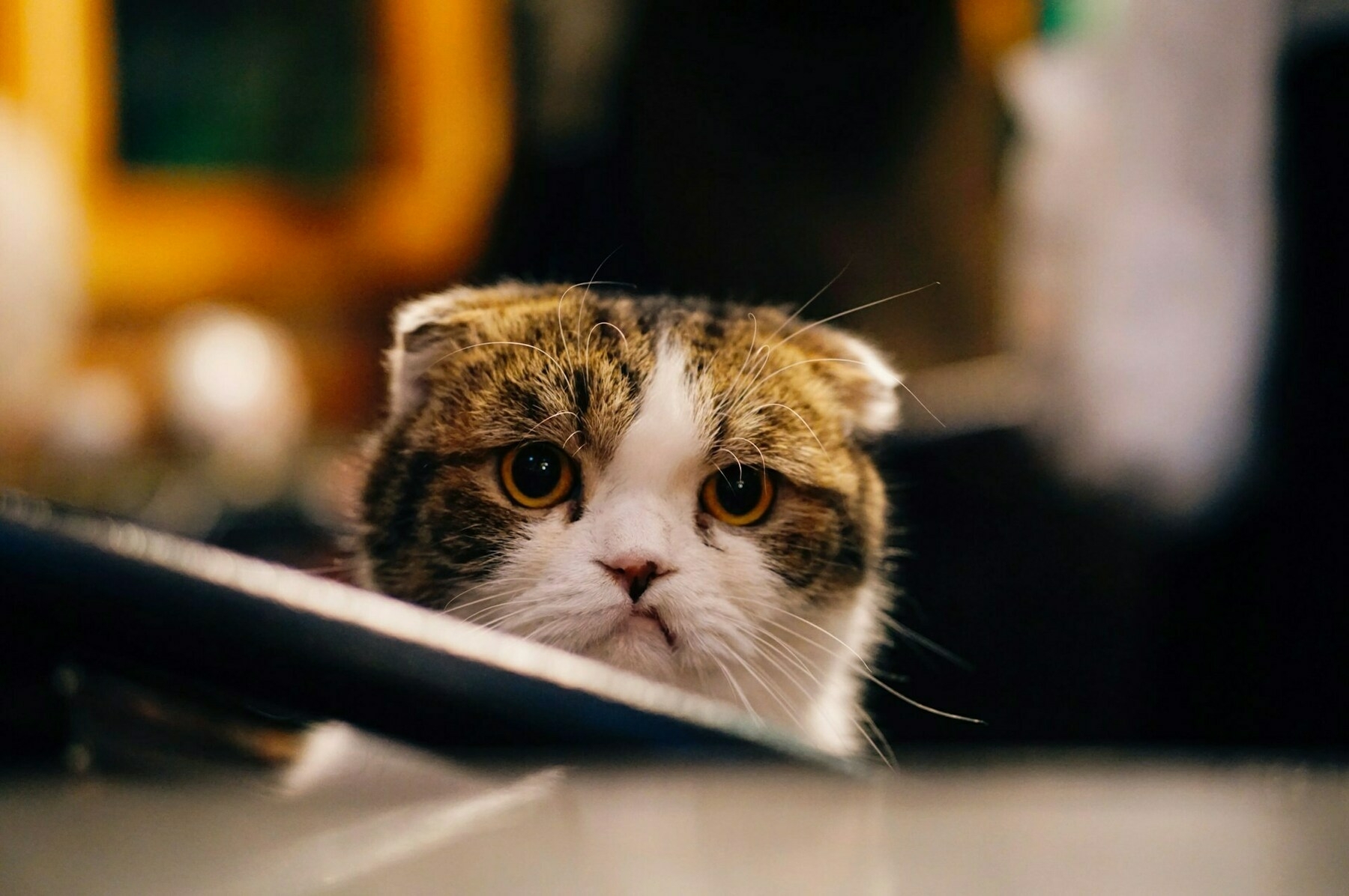
I love this from Adam Mastroianni, who likens annoyance to cholesterol, in that there are good and bad kinds. A good kind of annoyance can make someone look like a Good Samaritan.
Recently, some of my friends were swapping stories about surprisingly kind strangers, and I couldn’t help but notice that every Good Samaritan had acted out of annoyance. A construction worker spotted something amiss with my friend’s bike chain while she was waiting at a red light, and he came over and knocked it back into place, telling her, “I just can’t bear to see it like that.” Another friend was moving into an apartment, and their new neighbor spotted them struggling with a couch and came over to help, muttering “I can’t watch you guys do this on your own.” A third returned an envelope of cash they found because they, “Would hate to be the kind of person who kept it for themselves.”
I think this is actually the way most good-hearted people work: they’re motivated not by warm fuzzies, but by cold pricklies. They help because they can’t stand the sight of someone in need. The golden glow of altruism comes later, if at all, when they’re walking home and thinking about what a good person they are.
The causes that we stick with, then, aren’t the ones that do the most good, nor the ones that align with whatever we think are our most fundamental values. No, we stick with the causes that give us the same perverse pleasure that you get from popping a pimple.
We’d do a lot more for each other if we acknowledged this fact. Altruism doesn’t need to feel like pure self-flagellation or pure self-congratulation. A lot of the time, if you’re doing it right, it’ll feel irritating. Not all heroes wear capes—some of them wear an exasperated look of “are you seriously trying to lift that couch by yourselves”.
Source: Experimental History
Image: 傅甬 华
Anything that looks easy is hard

There’s some absolute gems in this list of ‘50 Things I Know’ by Rebecca Dai. #12 in particular is interesting, as it reflects one of Baltasar Gracián’s maxims.
- Discipline is a lie. It almost always backfires. Forcing yourself to do something you don’t want to do and living in pain for a sustained amount of time is against human nature. The trick is to set up your life in such a way that effort feels rather effortless. Tread the path of least resistance.
[…]
- Most social norms have no consequences when you break them. People who’ve figured this out keep saying “you can just do things” because it’s true. Society is not for individuals. It is for structural stability. You must be intentional about how and why you are participating. Plus, following social norms often requires pretending, another reason to eradicate such useless efforts when possible, which is almost always.
[…]
Your view of the world is immediately narrowed when you open a feed. Whatever shows up will convince you that is what matters, that is what you should pay attention to. If the top 10 posts are about one thing, you will overestimate its true relevance and forget a million things happen every single day. This is the more subtle and arguably more dangerous form of social pressure/manipulation. Don’t pay attention to the noise. Don’t start your day with feeds.
Anything that looks easy is hard. The effort is hidden from you. Anything that seems hard is easier than it’s made out to be. The appearance is to deter you. The only way to know the truth is to do it and find out for yourself.
[…]
- I know that judgements and defensiveness come from insecurity. Try the simple exercise of noticing the qualities you judge in others and the qualities you get defensive over. They often align.
[…]
- We all need the reminder from time to time that the world is so, so, so big. Whatever we are dealing with crumbles at the cosmic scale.
[…]
- You do not have to stay in touch with people whose company you don’t enjoy.
Source: ibehnam
Image: Bhargav Panchal
Being able to intensely live this experience for a day makes you want to revolutionize the world

Well this is absolutely fascinating. Aphantasia is an inability to generate mental images. It’s only been really “discovered” that people can’t do this in the last few years.
This article discusses recent research showing that psychedelic drugs can reverse this in some people some of the time. I know that some people microdose on these kinds of things, so as we learn more about the brain, being able to alter our brain chemistry is going to feel akin to gaining superpowers.
One especially interesting case study describes a woman with severe aphantasia who reported that after taking psilocybin mushrooms, for the first time in her life, she was able to form mental images. She even dreamed in pictures – something she had never experienced before. Although the effect faded over time, her description of the experience is remarkable:
“I found it incredible because it was the first time I had images in my mind, and I realized that you can play with images, zoom in, zoom out, break down colors. The possibilities with mental images are endless… it’s an experience of pure mind. It opened up incredible possibilities for me… Being able to intensely live this experience for a day makes you want to revolutionize the world.”
A similar case was reported in a man with severe aphantasia who took ayahuasca, which is a brew containing the potent psychedelic DMT. Following the experience, he noted:
“I can now bring forth faint pictures in my mind. They fade quickly but they are there. When dreaming I now see faint, quickly fading images. It feels like this experience with ayahuasca has slightly opened up my mind’s eye and allowed me to experience internal images like I have never had before.”
These accounts highlight just how dramatically psychedelics can shift perception. Psychedelics also promote neuroplasticity and synaptic growth, which could further explain why some users experience changes in imagination and perception.
Source: psychedelerium
Image: eLife
Really real time?
This video was posted to r/ChatGPT before being deleted and then appearing on r/artificial. Either way, Reddit users are pointing out that this is not “real time” as it takes 1-3 hours to process a 20 second clip like this on a local machine. However, the chances are you could do this in real time if you threw enough cloud computing power at it.
Source: Reddit
To be honest it sounds like NFTs all over again
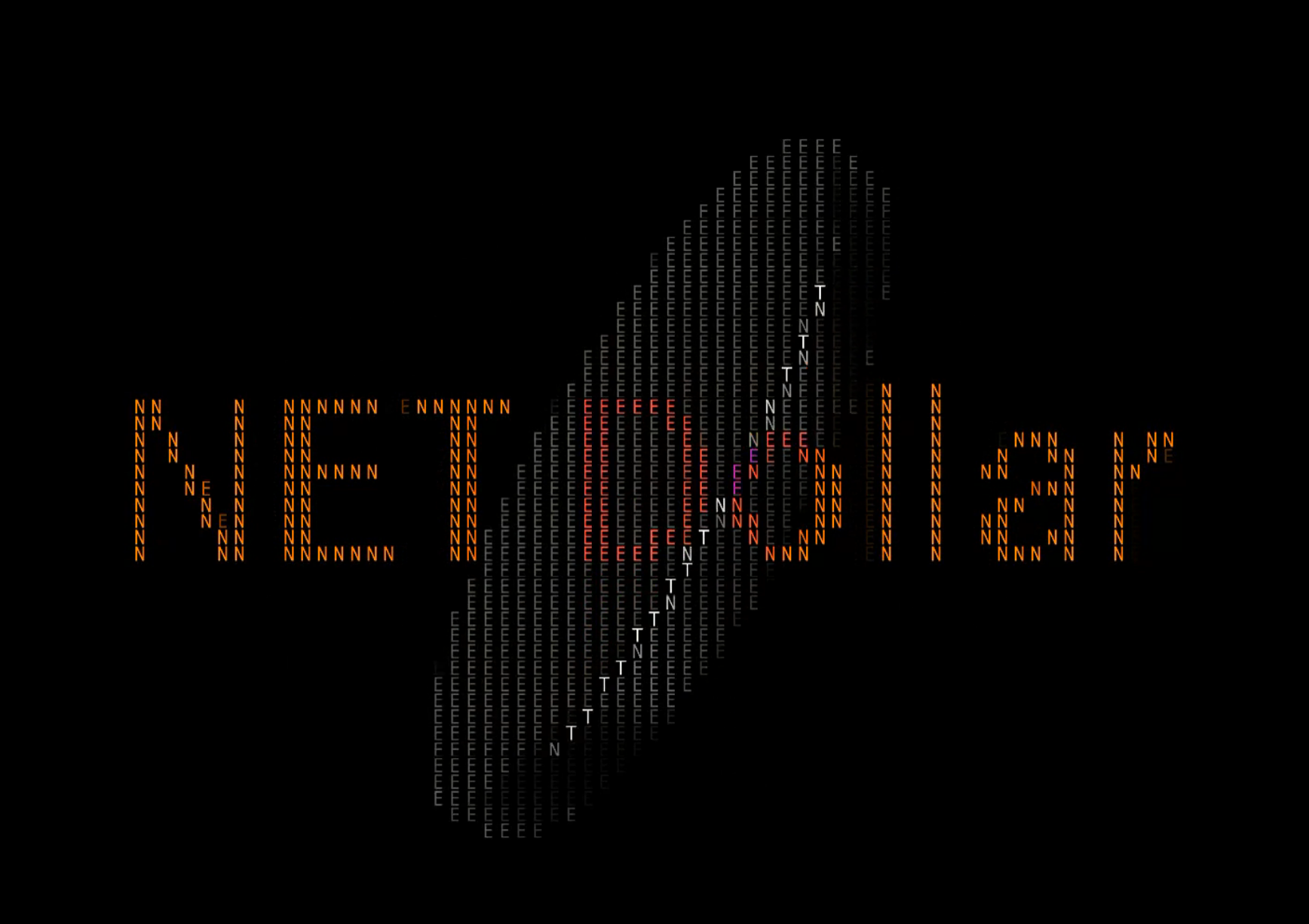
The idea of micropayments for internet content is almost as old as the internet itself. Just because Cloudflare have used the word “agentic” next to the acronym “AI” doesn’t mean this is a different idea. The only differences with NET Dollar seem to be that it’s automated and based on a stablecoin (i.e. the blockchain). To be honest it sounds like NFTs all over again.
I may be wrong, and have been wrong many times before, but I believe that we can safely predict this is going precisely nowhere. I’m not saying that something like what Cloudflare propose might exist in future, but this particular instantiation is likely to fail— even if only because the incumbent default web payment gateways might have something to say…
NET Dollar will help modernize the payment ecosystem for the future of the agentic web by:
- Making payments easy anywhere in the world: Agents will need systems to enable payments that are not only fast and secure, but also trusted, recorded transparently, and executed reliably at a global scale – across currencies, geographies, and time zones.
- Enabling instant, automated transactions: Personal agents will be able to take instant, programmatic actions like paying for the cheapest flight, or ordering an item the moment it goes on sale. Business agents could be instructed to pay suppliers when a delivery is confirmed.
- Unlocking a new business model for the Internet: NET Dollar will enable creators to be rewarded for unique and original content, developers to easily monetize APIs and applications, and AI companies to contribute back to the ecosystem that fuels them by compensating content sources fairly.
Cloudflare is also contributing to open standards such as the Agent Payments Protocol and x402, to simplify the process of sending and receiving payments on the Internet.
Source: Cloudflare Newsroom
Many other countries also use digital ID of one kind or another

I’m quoting this article about the planned introduction of UK digital identity system because, without going into technical details, it’s objective and covers all of the bases. In an ideal world, I wouldn’t want this kind of system. But we don’t live in an ideal world, and this approach seems reasonable given the current state of things.
Why do I say ‘reasonable’? It’s focused on the right to work (therefore students and pensioners aren’t required to have one) it combats existing fraud (people ‘sharing’ National Insurance numbers is rife), and simplifies access to government services. Also, knowing a bit about the technical standard it’s built on, people’s personal details remain on-device with only decentralised identifiers shared with a national registry.
I have no doubt, however, that it will be shot down in flames — even though such systems work well in other countries. It’s interesting that there are people writing in such diverse outlets as The Guardian and _The Telegraph in favour. So maybe once everyone’s calmed down there might be some rational debate.
The timing of this announcement actually makes my job a lot more ‘interesting’ next week as I’m running a workshop for various public bodies in Scotland. I’m helping one of them propose a national digital badging system based on Verifiable Credentials, which is also what underpins the proposed UK digital identity system.
Governments tend to be terrible at infrastructure projects and these days not well trusted by the population. At the time of writing the petition to stop them is at 1.85m signatures so I’m assuming that, far from heading off Reform UK, it will actually mean more people oppose the government and have reason to vote for a different party next time.
The government has announced plans to introduce a digital ID system across the UK, with Prime Minister Sir Keir Starmer saying it will ensure the country’s “borders are more secure”.
The IDs will not have to be carried day-to-day, but they will be compulsory for anyone wanting to work.
The government says the scheme will be rolled-out “by the end of the Parliament” - meaning before the next general election, which by law must be held no later than August 2029.
[…]
The digital IDs will be used to prove a person’s right to live and work in the UK.
They will take the form of an app-based system, stored on smartphones in a similar way to the NHS App or digital bank cards.
Information on the holders' residency status, name, date of birth, nationality and a photo will be included.
Announcing the scheme, Sir Keir said: “You will not be able to work in the United Kingdom if you do not have digital ID. It’s as simple as that.”
The government says the scheme is designed to curb illegal immigration by making it harder for people without status to find jobs. Ministers argue this is one of the key pull factors for migrants entering the UK illegally.
Employers will no longer be able to rely on a National Insurance number - which is currently used as part of proof of right to work - or paper-based checks.
At the moment, it is quite easy to borrow, steal or use someone else’s National Insurance number and that is part of the problem in the shadow economy - people sharing National Insurance numbers for example. The idea is that having a picture attached would make it - in theory - harder to abuse that system.
[…]
Digital ID will be available to all UK citizens and legal residents, and mandatory in order to work.
However, for students, pensioners or others not seeking work, having a digital ID will be optional.
Officials also stress it will not function like a traditional identity card: people will not be required to carry it in public.
Ministers have ruled out requiring the ID for access to healthcare or welfare payments.
However, the system is being designed to integrate with some government services, to make applications simpler and reduce fraud.
The government said that, in time, digital IDs would make it easier to apply for services such as driving licences, childcare and welfare. It said it would also simplify access to tax records.
[…]
The government has promised the system will be “inclusive” and work for those without smartphones, passports or reliable internet access.
A public consultation expected to be launched later this year will include looking at alternatives - potentially including physical documents or face-to-face support - for groups such as older people or the homeless.
[…]
The UK government has said it will “take the best aspects” of digital ID systems used elsewhere around the world, including Estonia, Australia, Denmark and India.
[…]
Many other countries also use digital ID of one kind or another, including Singapore, Greece, France, Bosnia and Herzegovina, the United Arab Emirates, China, Costa Rica, South Korea and Afghanistan.
Source: BBC News
Image: Arthur Mazi
The words we use define boundaries for things, but those boundaries are not universal
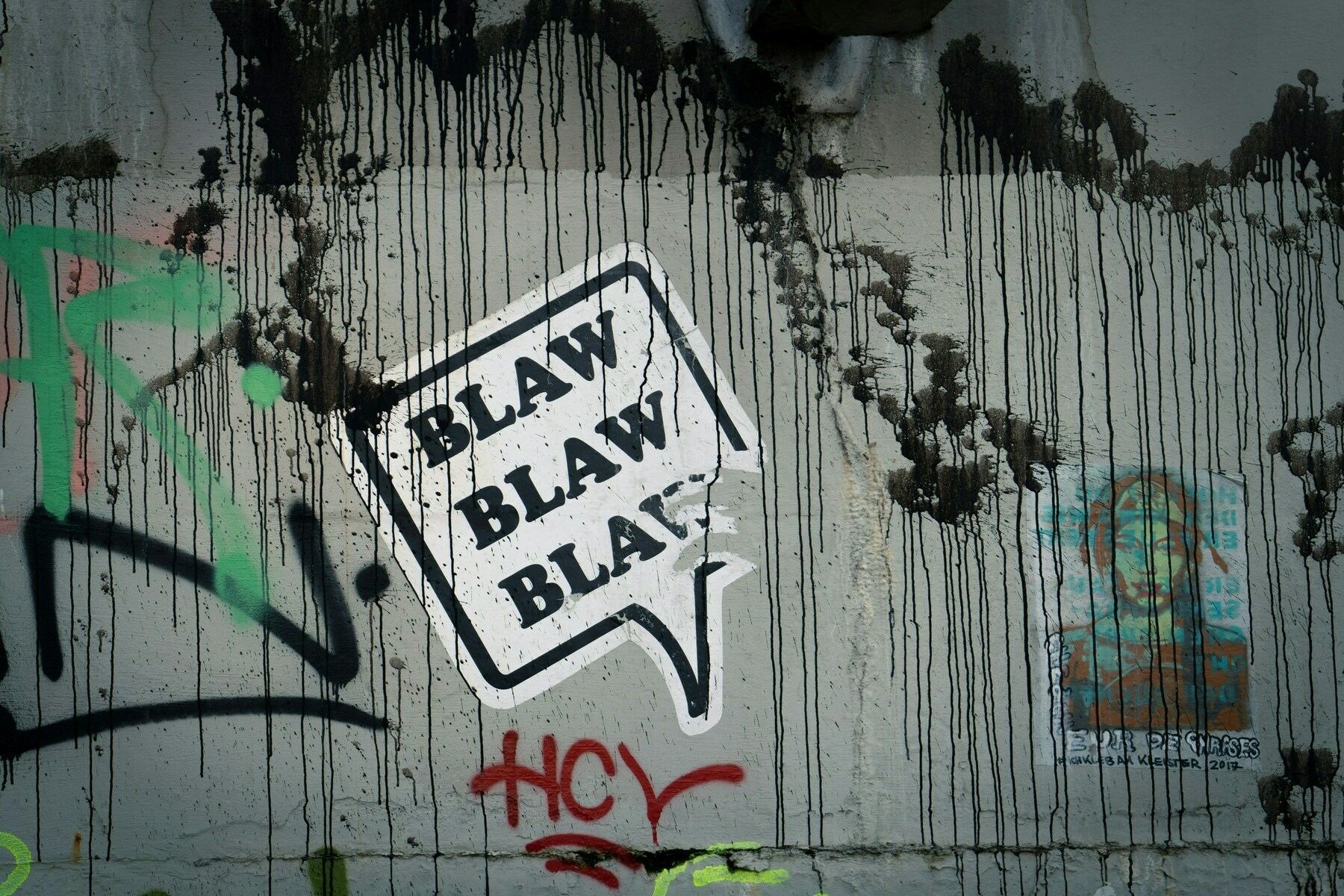
I’m immensely grateful to Laura Hilliger for sharing this post. While it covers familiar ground for me (Wittgenstein on games! People that categorise colours differently! The interconnectedness of everything!) it’s a good reminder for me to get back to writing about ambiguity.
It’s 14 years since I wrote an article with my thesis supervisor about ambiguity, and I’ve been fascinated by the topic ever since. I reckon one of the best things you can do to open your mind to all of this is read books like Alice’s Adventures in Wonderland (which I quote in that article) or Flatland. Of course, the danger with doing too much philosophical thinking is that you tear a hole in reality, poke your head through to the other side, and things are never the same again…
First, I’ll explain how language is a very flimsy and arbitrary tool in itself. It’s deceptively simple—even children can use it—yet it’s built on a mountain of assumptions and contingencies that could really be chosen any other way. Second, I’ll try to make the point that, regardless of how precise or imprecise our language is, our habit of distinguishing things from one another doesn’t seem to be justified by how reality is built.
[…]
To begin with, human language gives you the impression of being able to categorize things with names. Our words feel so clear, so unambiguous in our daily lives, that any ambiguity or fuzziness becomes instinctively repulsive to us. We consult dictionaries, we ask for clarifications, we argue and get upset over the “real” meaning of “free will”, “justice”, “consciousness”, and “I’m fine”. Of course we know that words can’t be all that precise, that their meaning depends on context, and so on, but that’s still underestimating just how unreliable they are.
[…]
My point is: the words we use define boundaries for things, giving us handy ways to tell things apart, but those boundaries are not universal. They’re not “in the world”, they’re practical shortcuts that exist only in human heads. If you look really closely, or if you look at the science, there is no strong reason to draw those lines one way or another. There is no defensible distinction between a mountain and a mountain range, or between a mountain range and the Earth’s crust, or between the Earth’s crust and the Earth. A mountain is the Earth, and calling it a “part” of it is a convention that suits us when we want to talk about going places, or studying cloud formations, and other very human goals. Some things seem to have more clear-cut separations between them, like the boundary between an egg’s shell and the air, but even then the demarcation is clear only under certain conditions (i.e. a certain range of temperatures and air pressures) and size scales (i.e. not at the atomic level or in terms of astronomical distances) and time scales (i.e. the egg stops existing as a distinguishable object after a while).
[…]
Now we’ve gone beyond the realm of language, and are talking about the very nature of reality. The universe is one seamless, uninterrupted network of rippling and overlapping differences, and words merely project fuzzy boundaries that need only work well enough for our temporary and circumstantial needs. Even in very limited contexts where the words are relatively precise, our choice of terms to describe anything is arbitrary. In truth, everything is interacting, directly or indirectly, with everything else, and there is no obligatory, objective way to cut that web into separate entities. Nature has no “boundary-formation law” nor requirements for things to clump together and stay clumped long enough that we can give them names. In fact, the laws we have are all about energy transformations and waves and forces pushing and pulling stuff around: none are about keeping things still.
And yet, things do clump together, and they do remain still or stable, and we do have enough time to make up labels for them. The stability we take for granted—from that of the solid objects we see and touch to that of long-lasting processes like photosynthesis and life itself—seems to be some kind of freak accident. Stability comes as a side effect of mutability.
Source: Plankton Valhalla
Image: Mika Baumeister
What we need to do is figure out how we can participate in reality

Fascists don’t deal with reality. They say that immigrants are eating cats, dogs, or swans. They blame far-right on far-right violence as the work of ‘antifa’. They claim that black is white, up is down, and inside is out.
This post by J.P. Hill uses the recent hoopla around the Rapture supposedly coming yesterday as a way in to discuss all of this. It’s a distraction, it’s entertainment without cost: not even bread and circuses but just AI slopaganda for an abhorrent worldview.
We each have a choice to make right now. On the one hand, the most powerful people on Earth want to lure us away from the truth. They want us to believe their lies, they want us to live in an artificial reality while they steal the land beneath our feet and take the water beneath the land. The ruling class is betting trillions on AI, they’re betting trillions on fascism, they’re doubling down on a system that requires infinite growth on our finite planet. Instead of dealing with reality they tell us we’re all going to Mars one day. Instead of meeting our needs they’re telling us to blame the most marginalized people in society. Instead of offering us truth they offer us a series of lies, a series of imaginary carrots dangled to take us further and further from reality while they pillage the real world all around us.
It’s difficult to imagine changing this paradigm. It can be hard to imagine confronting the brutal nature of our reality and building something better in its place. As Mark Fisher said, “It’s easier to imagine the end of the world than the end of capitalism.” For countless people it seems easier to imagine the apocalypse or the rapture than it is to imagine a better world. And, in fairness, imagining heaven is simple. Imagining the restructuring of society, the construction of egalitarian systems, the implementation of real justice is complicated.
But we don’t need to figure out a perfect world right now. What we need to do is figure out how we can participate in reality. We need to stop seeking escape and seek instead plug in, play a part, take some action out in this world that so desperately needs us. It’s time to accept reality, accept that it’s ugly out there, and accept that we’re the only ones who can change this world. The forces of fascism rely on you tuning out, running from reality, indulging in their fantasies. We have to reject their lies, reject the carrots they dangle, and instead run toward reality and toward active participation in this fucked up world.
Source and image: New Means
Microcast #107 — Apocalyptic events

I found the best Wikipedia page, which reminded me of an awesome episode of the ‘Hardcore History’ podcast.
Show notes
- List of dates predicted for apocalyptic events (Wikipedia)
- Prophets of Doom (Hardcore History)
(Note: Dan Carlin sells older podcast episodes on his blog. You can also access the episode for free here)
Microcast #106 — Conversational configuration
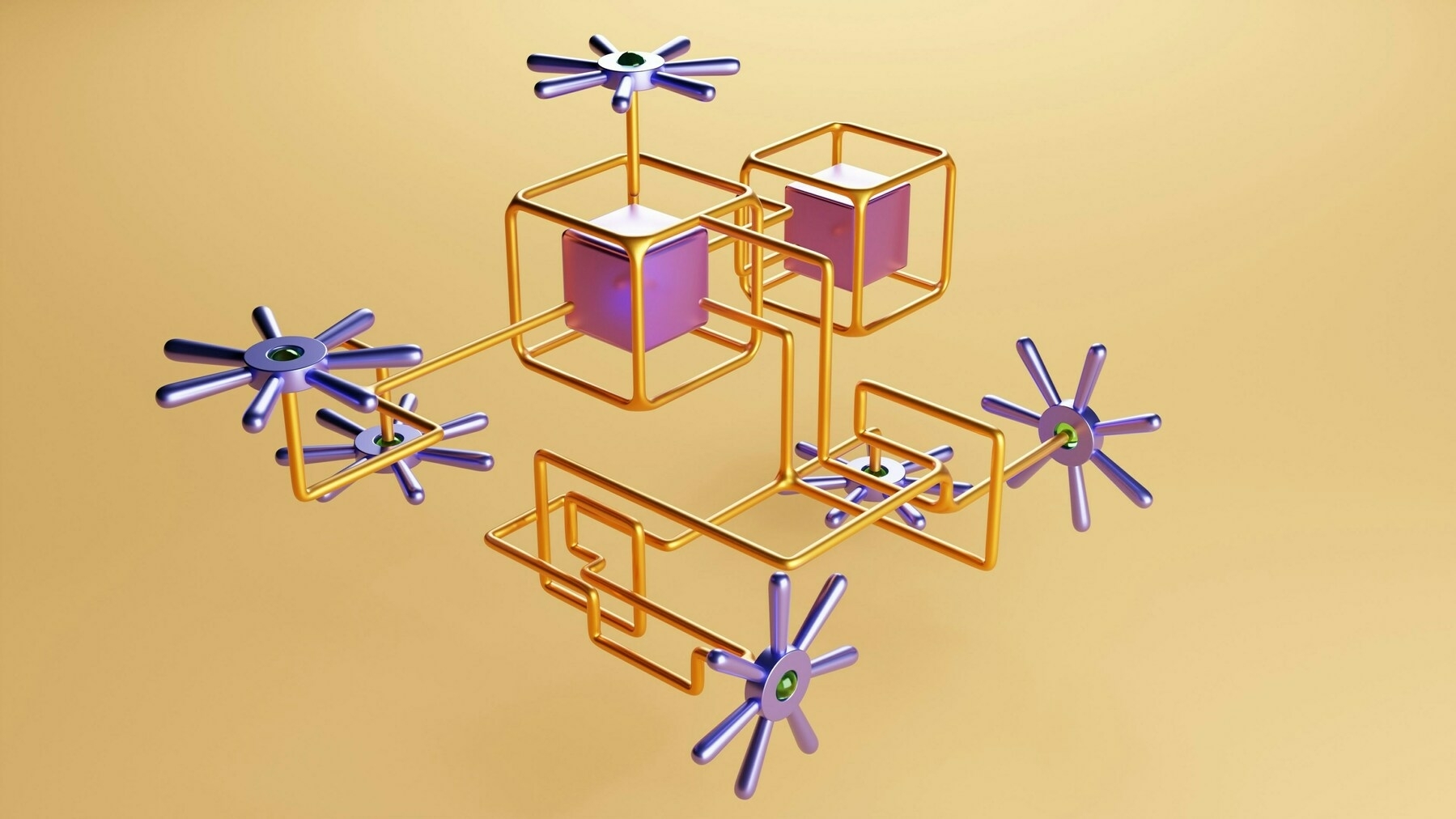
Thinking about ways in which users can interact with systems in conversational ways which allow apps, platforms, and services to configure themselves to meet user needs.
Show notes
- Android users can now use conversational editing in Google Photos (The Keyword)
- Booking.com Enhances Travel Planning with New AI-Powered Features for Easier, Smarter Decisions (Booking.com)
- Discourse (Discourse.org)
Microcast #105 — Being defeated is optional

Resurrecting microcasts after 18 months (no intro/outro music yet!) with musings on quotations from Roger Crawford and Epictetus:
Show notes
- Epictetus (Wikipedia)
- The Enchiridion (Internet Classics Archive)
- Roger Crawford quotations (Goodreads)
The project of building alternatives to Big Tech is colliding with American authoritarianism

Laurens Hof writes a newsletter called Connected Places which really is a must for anyone interested in federated social networks and decentralisation in general. As someone who has led a Fediverse project I retain a professional interest, and of course I have a personal interest as someone with active Mastodon and Bluesky accounts (as well as less active Pixelfed and Bonfire accounts).
This particular post about ‘Blueskyism’ is a difficult one to quickly summarise, as it’s nuanced, but essentially Hof explains the situation that Bluesky (the company) found itself in last week after the assassination of Charlie Kirk. Essentially, because Bluesky (the network) isn’t very decentralised the moderation practices of Bluesky (the company) affect almost everyone on Bluesky (the network).
Although Hof doesn’t mention it specifically, there are some calling the assassination a ‘Reichstag fire’ moment for the US — i.e. a pretext to crack down on the political left. Bluesky (the network) is being painted by those on X (including its owner Elon Musk) as a ‘leftist space’ which needs to be ‘dealt with’ in some way. As it is not very decentralised, someone could buy Bluesky (the company) and effectively shut it down. What’s easier, when you have someone like Trump in power, as we’ve seen with Jimmy Kimmel is that an executive order, threats of tariffs, or some other abuse of power, can effectively silence free speech.
The state of open social networks has rapidly changed. Building social networks that can overtake big tech platforms was always an inherently political project, but recent developments in America have added a new dimension of urgency. Centrist pundits have made an effort to paint Bluesky as a leftist space. Outrage merchants on X share and amplify fabricated narratives about Bluesky users celebrating Kirk’s death, while fascist voices grow louder in their calls to shut down and prosecute all democratic and leftist spaces, which now includes Bluesky. Now, with US congressional demands for censorship and calls to remove Bluesky from app stores, the project of building alternatives to Big Tech is colliding with American authoritarianism.
[…]
Building resilient networks in 2025 means not just architecting against enshittification, but against authoritarianism. The infrastructure for ‘credible exit’ that Bluesky promotes may soon need to encompass not just leaving one ATProto platform for another, but also factor in what happens to the entire open social ecosystem when app stores and governments align against it. When authoritarian governments and tech oligarchs coordinate to eliminate spaces for political opposition, the shape of the solutions, both technological and social, need to account for this new threat. The challenge now is to imagine and build infrastructure that can survive not just bad business decisions, but coordinated political suppression. Building resilient social networks now means preparing for a future where being labeled as a ‘left’ space can get your app removed from app stores, and where the act of maintaining an open protocol becomes an act of resistance.
Source: Connected Places
Image: Elena Rossini
A brick is always a brick, whatever the reasons of the clown chucking it

It’s hard to argue against the argument by Aditya Chakrabortty in this article for The Guardian that Labour are now simply the warm-up act for Reform UK. Having seen a majority of my fellow countrymen and women vote for Brexit almost a decade ago, it wouldn’t surprise me if they decided to vote in the chief architect, Nigel Farage.
It’s almost like the definition of the sunk cost fallacy: lurching to right and “taking back control” from the EU didn’t do enough, so let’s go even further and “kick out the immigrants,” eh? Utterly, utterly mad. Anything to stop us paying attention to insane wealth inequality and extraordinarily rich individuals acting like they represent the “will of the people.”
I can’t quickly re-find the source, but I remember someone pointing out that — due to a declining birth rate and ageing populations — it won’t be long before many nations will be competing for immigrants.
At the end of last month, Nigel Farage promised mass deportation of practically anyone seeking asylum in this country, even if it meant handing Afghan women over to the Taliban and sending Iranian dissidents to their deaths. To the press, No 10 didn’t so much as raise an eyebrow at the Reform UK leader referring to other humans as a “scourge” or an “invasion”. For the great unwashed, it posted the most extraordinary advert. “Whilst Nigel Farage moans from the sidelines, Labour is getting on with the job,” it read, showing an image of Starmer stamped with “removed over 35,000 people from the UK”. Why vote for the full-fat hatemongers when diet racists will do the job just fine?
Plenty of Labour people will say they aren’t racist at all, and I wouldn’t wish to argue. But one lesson about prejudice I learned fast growing up was to focus on impact rather than quibble about intention. A brick, in other words, is always a brick, whatever the reasons of the clown chucking it.
[…]
“The British people have a far more nuanced view of immigration than the media and political narrative would have us believe,” observes Nick Lowles of anti-fascist organisation Hope Not Hate in his new book, How to Defeat the Far Right. Only one out of 10 Britons is outright opposed to immigration, while many who identify, say, asylum seekers as a huge issue have never met one. Of the top 50 areas in the UK most vehemently opposed to Muslims, Lowles finds that 27 are in the district of Tendring, in Farage’s constituency of Clacton. Yet how much of Tendring’s population is Muslim? Fewer than one out of 200: 0.4%.
Armed with such findings and a historic majority, Labour could easily counter some of the wild extremism. Ministers might point out that “English patriot” Robinson is an Irish passport-holder (up until last summer, anyway) who hunkers down in Spain and has a list of criminal convictions long enough for a tattoo sleeve. Starmer might observe how much of the UK would simply fall apart without migrants and their children – from your local hospital to the school to the care home. How universities are facing collapse without foreign students and their bumper fees. He might even point out – imagine! – that migrants are human too, with their own lives and dreams for themselves and their families. We could get on to the legacy of empire, and about how the climate crisis and poverty force other populations to move.
[…]
History has a habit of giving little men big tasks. Joe Biden had one job: to stop Donald Trump returning to power. His failure will have consequences for the world. Starmer’s one historic role is to stave off the hard right. He is not only failing, he is paving the way for Farage and his crew. The supposed “centrists” are ushering fringe politics into the mainstream and normalising the abhorrent.
But just listen to the speeches and chants made by the extremists. Robinson no longer talks about small boats; he wants his country back. After years of resisting mass deportations as “impossible”, Farage now touts them as the solution. The Overton window is shifting further and further to the right. The ultimate price for that will not be paid by a politician, but by people far from power: an Ethiopian boy, perhaps, with no family, or an Asian kid looking out the window one evening.
Source: The Guardian
Image: Hal Gatewood
Now is the time to be even more aggressive, not to cower in the face of pressure and criticism

Paris Marx, who is back on Ghost after a brief flirtation with Substack, takes a look at social media regulation in a recent post. Comparing the regulatory landscapes in the US, UK, and Australia, he argues that “the perfect is the enemy of the good” when it comes to what he calls the “social media harm cycle.”
As he points out, although the regulations are targeting children under the age of 16, the issues around AI and algorithms on social networks affect everyone. We’ve tried our best to keep our two teenagers off algorithmic social networks until they turned 16, but it’s difficult. And it’s not like there’s a magic “maturity and self-control” switch that is turned on when you reach specific ages.
Instead, and this isn’t something I would have advocated for a decade ago, regulation is required to break the loop of algorithmic addiction. Back in 2012 when my son and daughter were five years old and one year old, respectively, I argued that “The best filter resides in the head, not in a router or office of an Internet Service Provider (ISP).” I’m still anti-censorship, but we’ve managed to allow Big Tech to have far too much control over our everyday lives.
These algorithms are perhaps the most powerful shapers of society at the moment — which is why it’s kicking off everywhere. They’re rage machines.
In the past, I might have been more hesitant about these efforts to ramp up the enforcement on social media platforms and even to put age gates on the content people can access online. But seeing how tech companies have seemingly thrown off any concern for the consequences of their businesses to cash in on generative AI and appease the Trump administration, and seeing how chatbots are speedrunning the social media harm cycle, many of my reservations have evaporated. Action must be taken, and in a situation like this, the perfect is the enemy of the good.
I don’t support the US measures that are effectively the imposition of social conservative norms veiled in the language of protecting kids online. But I am much more open to what is happening in other parts of the world where those motivations are not driving the policy. Personally, I think the Australians are more aligned with an approach I’d support.
They’re specifically targeting social media platforms, rather than the wider web as is occurring in the UK, and the mechanism of their enforcement surrounds creating accounts. So, for instance, now that YouTube will be included in the scheme, that means users under 16 years of age cannot create accounts on the platform — that would then enable collecting data on them and targeting them with algorithmic recommendations — but they can still watch without an account. There are still concerns around the use of things like face scanning to determine age, but in my view, it’s time to experiment and adjust as we go along.
Even with that said, if I was crafting the policy, I would take a very different approach. It’s not just minors who are harmed by the way social media platforms are designed today — virtually everybody is, to one degree or another. While I support experimenting with age gates, my preferred approach would focus less on age and more on design; specifically, severed restrictions algorithmic targeting and amplification, limiting data collection and making it easier for users to prohibit it altogether, and developing strict rules on the design of the platforms themselves — as we know they use techniques inspired by gambling to keep people engaged.
To be clear, the Australians and the Brits are looking into those measures too — if not already rolling out some measures along those lines. These are actions we need to take regardless of the politics behind the platforms, but given how Donald Trump and many of these executives are explicitly trying to use their power to stop regulation and taxation of US tech companies, now is the time to be even more aggressive, not to cower in the face of pressure and criticism.
Source: Disconnect
Image: Declan Sun
People living today are almost never the descendants of the people in the same place thousands of years before
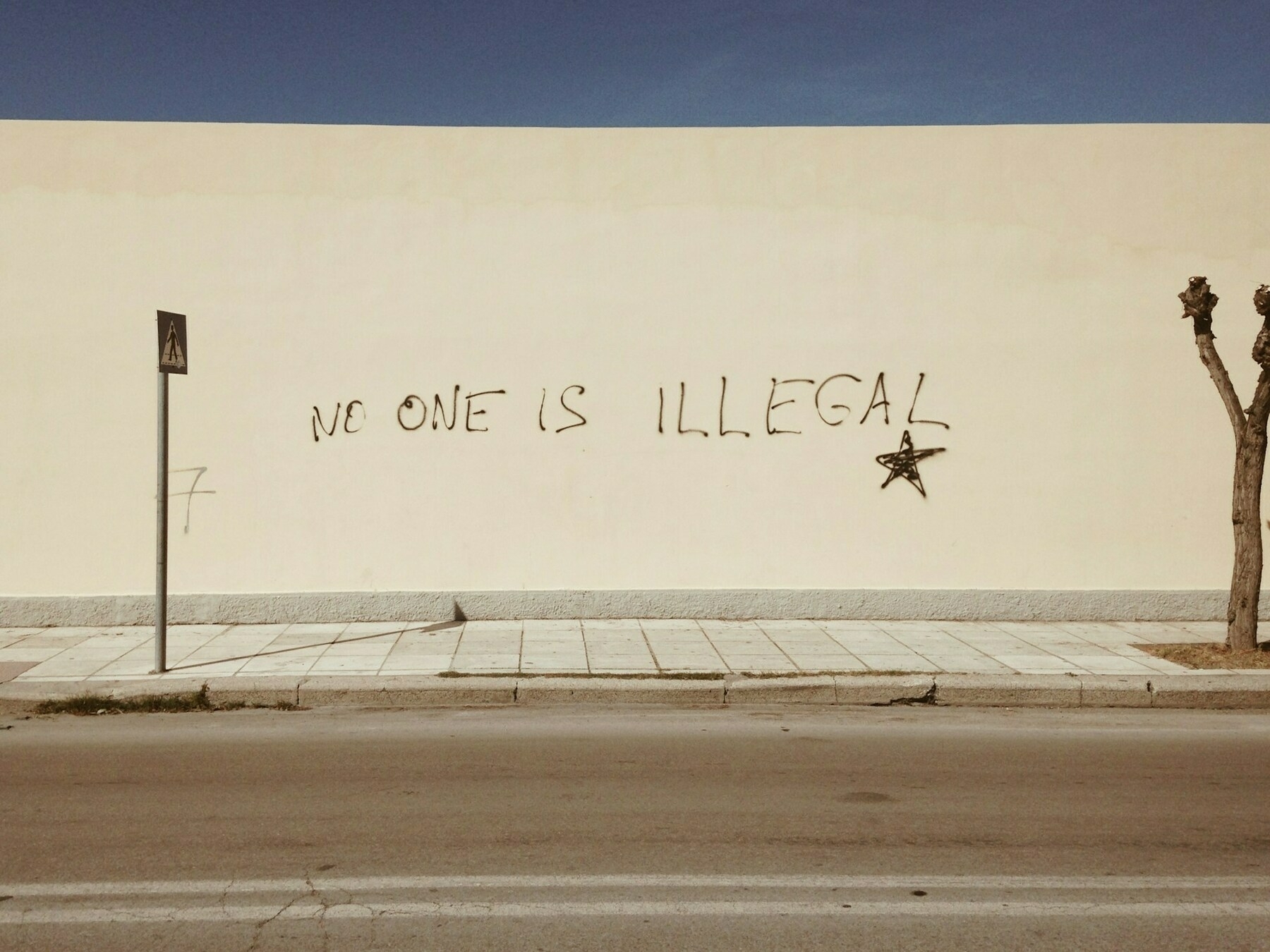
At a time when nationalists, white supremacists, and fascists would have you believe otherwise, it’s worth reminding ourselves that we are essentially a migratory species.
[I]ncreasingly sophisticated analysis of genetic material made possible by technological advances shows that virtually everyone came from somewhere else, and everyone’s genetic background shows a mix from different waves of migration that washed over the globe.
“Ancient DNA is able to peer into the past and to understand how people are related to each other and to people living today,” [Harvard geneticist David] Reich said during a talk at the Radcliffe Institute for Advanced Study. “And what it shows is worlds we hadn’t imagined before. It’s very surprising.”
Human populations have been in flux for tens of thousands of years since our emergence from Africa. The details of the still-developing picture are complex, but the overall theme is one of increasing homogenization since human diversity fell from the time when modern humans lived next door to Neanderthals, two strains of Denisovans, and the diminutive Homo floresiensis of Indonesia.
[…]
“The big perspective change from ancient DNA study is that people living today are almost never the descendants of the people in the same place thousands of years before,” Reich said. “Human movements have occurred at multiple timescales, often disruptive to the populations that experience them, and these patterns were not possible to predict and anticipate without direct data.”
Source: The Harvard Gazette
Image: Miko Guziuk
You must not talk about the future. The future is a con.

Emily Segal’s talk at FWB FEST last month was entitled The End of Trends, and this post both embeds the talk and provides an edited transcript (which I appreciate: more people should do this!)
My understanding of the productively ambiguous post is that trying to predict the future based on “trends” is probably best left to AI, which can sift through much more information that humans can. Instead, we should be focusing on the more “grounding” perspective of trying to enrich the present moment.
I like this approach. Goodness knows it’s anxiety-provoking for people like me to extrapolate existing behaviours into the future. While some might say this nullifies effective action, I’d actually argue the opposite: it prevents paralysis and provides a bias towards action in the here-and-now.
In Canto 20 of Dante’s Inferno, Dante and Virgil visit the circle of hell reserved for astrologers and soothsayers. Their punishment for trying to see too far ahead in life is that their heads are twisted backward. Their hair runs down their fronts. They stumble forward while always looking behind them.
Dante breaks the fourth wall here: he says it’s wrong to pity anyone in hell, but he can’t help pitying the soothsayers. I think many of us are in a similar predicament now – trying to move forward while constantly looking backward.
[…]
I often think of Ursula K. Le Guin’s The Left Hand of Darkness, in which a group of “Foretellers” pool consciousness to answer questions they could not access individually. The weaver in the group maintains tension in the pattern until it breaks, revealing the answer.
And I think of Alejandro Jodorowsky’s caution:
“You must not talk about the future. The future is a con. The tarot is a language that talks about the present. If you use it to see the future, you become a charlatan. … Everything is linked, but nothing is a matter of probability.”
In an age surrounded by probability machines, this perspective is grounding. So I leave you with this: Will you become a novum – a machine-like thinker, a better-than-chance oracle in a human body? Or will you focus on enriching the present, making it better in the moment?
Source: Nemesis Memo
Image: Suraj Raj & Digit
Asking, Doing, or Expressing?
 A few months ago, when I shared the work of Marc Zao-Sanders about how people use generative AI, I noted that his “a rigorous, expert-driven curation of public discourse, sourced primarily from Reddit forums” didn’t actually include a methodology.
A few months ago, when I shared the work of Marc Zao-Sanders about how people use generative AI, I noted that his “a rigorous, expert-driven curation of public discourse, sourced primarily from Reddit forums” didn’t actually include a methodology.
In the last few days, OpenAI has released a paper in collaboration with scholars at Duke University and Harvard University which would suggest that people’s actual use of ChatGPT is… quite difference to the picture that Zao-Sanders gave. To me, that’s unsurprising given that he was sourcing his insights from Reddit, which skews young and male. Interestingly, the demographics of ChatGPT users have changed markedly in the years since it was released. Apparently, in the first few months after it was made available, four-fifths of active users had “typically masculine first names” with that number dropping to less than half as of June 2025. Now, active users are slightly more likely to have typically feminine first names. It seems like different genders use generative AI differently, too (Fig.19).Finally, it’s telling that, as the use of ChatGPT grew five-fold from June 2024 to June 2025 the share of “non-work” uses rose from 53% to 73%. It’s definitely interesting times. Don’t mind me, I’m off to re-watch Her (2013).
Interestingly, the demographics of ChatGPT users have changed markedly in the years since it was released. Apparently, in the first few months after it was made available, four-fifths of active users had “typically masculine first names” with that number dropping to less than half as of June 2025. Now, active users are slightly more likely to have typically feminine first names. It seems like different genders use generative AI differently, too (Fig.19).Finally, it’s telling that, as the use of ChatGPT grew five-fold from June 2024 to June 2025 the share of “non-work” uses rose from 53% to 73%. It’s definitely interesting times. Don’t mind me, I’m off to re-watch Her (2013).
First, we show evidence that the gender gap in ChatGPT usage has likely narrowed considerably over time, and may have closed completely. In the few months after ChatGPT was released about 80% of active users had typically masculine first names. However, that number declined to 48% as of June 2025, with active users slightly more likely to have typically feminine first names. Second, we find that nearly half of all messages sent by adults were sent by users under the age of 26, although age gaps have narrowed somewhat in recent months. Third, we find that ChatGPT usage has grown relatively faster in low- and middle-income countries over the last year. Fourth, we find that educated users and users in highly-paid professional occupations are substantially more likely to use ChatGPT for work.
We introduce a new taxonomy to classify messages according to the kind of output the user is seeking, using a simple rubric that we call Asking, Doing, or Expressing. Asking is when the user is seeking information or clarification to inform a decision, corresponding to problem-solving models of knowledge work… Doing is when the user wants to produce some output or perform a particular task, corresponding to classic task-based models of work… Expressing is when the user is expressing views or feelings but not seeking any information or action. We estimate that about 49% of messages are Asking, 40% are Doing, and 11% are Expressing. However, as of July 2025 about 56% of work-related messages are classified as Doing (e.g., performing job tasks), and nearly three-quarters of those are Writing tasks. The relative frequency of writing-related conversations is notable for two reasons. First, writing is a task that is common to nearly all white-collar jobs, and good written communication skills are among the top “soft” skills demanded by employers (National Association of Colleges and Employers, 2024). Second, one distinctive feature of generative AI, relative to other information technologies, is its ability to produce long-form outputs such as writing and software code.
We also map message content to work activities using the Occupational Information Network (O*NET), a survey of job characteristics supported by the U.S. Department of Labor. We find that about 58% of work-related messages are associated with two broad work activities: 1) obtaining, documenting, and interpreting information; and 2) making decisions, giving advice, solving problems, and thinking creatively. Additionally, we find that the work activities associated with ChatGPT usage are highly similar across very different kinds of occupations. For example, the work activities Getting Information and Making Decisions and Solving Problems are in the top five of message frequency in nearly all occupations, ranging from management and business to STEM to administrative and sales occupations.
Overall, we find that information-seeking and decision support are the most common ChatGPT use cases in most jobs. This is consistent with the fact that almost half of all ChatGPT usage is either Practical Guidance or Seeking Information. We also show that Asking is growing faster than Doing, and that Asking messages are consistently rated as having higher quality both by a classifier that measures user satisfaction and from direct user feedback.
…We argue that ChatGPT likely improves worker output by providing decision support, which is especially important in knowledge-intensive jobs where better decision-making increases productivity (Deming, 2021; Caplin et al., 2023). This explains why Asking is relatively more common for educated users who are employed in highly-paid, professional occupations. Our findings are most consistent with Ide and Talamas (2025), who develop a model where AI agents can serve either as co-workers that produce output or as co-pilots that give advice and improve the productivity of human problem-solving.
Source & image: OpenAI
We tell ourselves the story of human uniqueness like a bedtime prayer

While I think this post overestimates the ‘rupture’ of AI, it is very well-written and certainly makes the reader think about the “clean arguments and messy implications” of “computation without consciousness” in a market which is a “sorting engine for outcomes.”
For me, though, the thing which is missing from this otherwise well-written piece is that human exceptionalism applies to everything we do. We are full of paradoxes: we keep some kinds of animals as pets and eat other ones. We talk about the wonder of Nature while destroying it. We see ourselves as separate to the natural order of things rather than part of it.
I find it interesting to see which people get worked up about AI. Writers and artists, for sure, as their livelihoods are on the line. But also, I would suggest (and separately) people who see humanity as somehow special and unique—without, necessarily, being able to describe what that uniqueness is.
The podcast episode I was listening to this morning on the philosophy of self-destruction is illustrative here. Georges Bataille a philosopher I’d never before heard of, argued that the thing that makes us unique is our tendency to self-destruction and sacrifice. What that means in relation to “the boundary between human value and human utility” I’ll leave for you to decide.
We tell ourselves the story of human uniqueness like a bedtime prayer. We are the animal that understands. We are the creature that feels. We are the author of meaning. Then the machines arrive with more memory than our institutions, more patience than our professions, and an ability to synthesise that makes much of our work look like the slow rearrangement of furniture. We retreat to consciousness and call it the final moat. Perhaps it is. The trouble is that markets do not pay for qualia. They pay for results. A system that can pass for understanding in most practical situations is enough to reprice our worth, even if it experiences nothing while doing so.
[…]
What makes the present rupture stranger [than previous ones] is not that tasks are being automated. That is an old trick. It is that the rungs we used to climb are melting away beneath our feet. The legal apprentice once learned by reading mountains of documents. The junior developer learned by slogging through bugs. The analyst learned by cleaning data until patterns flashed in the mind like weather. Now the entry work evaporates. A machine does it in minutes and does not complain. We congratulate ourselves on efficiency and then discover we have created an experience cliff. We are asking people to supervise work they were never allowed to do. Even the best intentioned upskilling will falter if the pipeline that produces intuition has been hollowed out. This cliff also suggests a remedy in simulated apprenticeship, a deliberate redesign of early careers where newcomers learn by validating and correcting machine output rather than by doing the drudgework the machine has removed. It is a shrewd answer, and it may be the only bridge we can build at speed.
[…]
Philosophy arrives, as it tends to, with clean arguments and messy implications. You can hold on to the view that computation without consciousness is never true understanding and still lose the economic game. You can be right about the inside of experience and wrong about the price of it. To be consoled by the thought that machines do not feel while they outpace us in most of the places society rewards is to win a metaphysical medal and find no one pays for medals. The market is not a seminar. It is a sorting engine for outcomes.
[…]
The line we have been defending is the boundary between human value and human utility, and we have treated them as if they were the same. We have been racing to remain useful because our institutions can only recognise worth through productivity and pay. A civilisation that automates most of its work must decide whether it will abandon people or invent a new grammar for dignity. We can reform education until the syllabi shine and still fail if graduation delivers people into a labour market that no longer needs them. We can preach lifelong learning as a secular catechism and still feel the hollowness if learning has nowhere meaningful to land.
Source: Hybrid Horizons
Image: Drew Beamer
